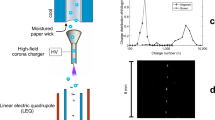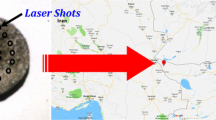Abstract
The application of laser-induced breakdown detection (LIBD) as a new and powerful particle-analyzing technique for the determination of solubility data by monitoring initial colloid generation, when the metal ion concentration just exceeds the solubility at a given pH value, is investigated. Laser-induced breakdown spectroscopy (LIBS) is used for selective analysis of an aqueous suspension of lanthanide oxide particles in the presence of the respective lanthanide aquo ion. The detection limit for aquo ion and oxide particle is determined. On the basis of the different detection limits, the LIBS technique is used to study the formation of hydroxide colloids in aqueous solution by varying the pH value until the solubility limit is exceeded. LIBS enables both qualitative and quantitative monitoring of particle formation without artifacts arising from other contaminants. LIBD and LIBS are described and compared. The advantages and disadvantages of the methods for the determination of solubility data are discussed.
Similar content being viewed by others
Author information
Authors and Affiliations
Additional information
Electronic Publication
Rights and permissions
About this article
Cite this article
Bundschuh, T., Yun, JI. & Knopp, R. Determination of size, concentration and elemental composition of colloids with laser-induced breakdown detection/spectroscopy (LIBD/S). Fresenius J Anal Chem 371, 1063–1069 (2001). https://doi.org/10.1007/s002160101065
Received:
Revised:
Accepted:
Published:
Issue Date:
DOI: https://doi.org/10.1007/s002160101065




